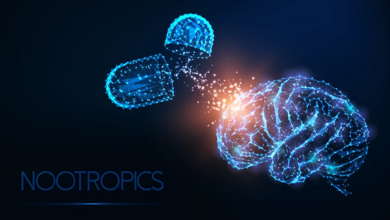Boom Predicted in Next-Generation Antibody Therapeutics Market in Future

The global next-generation antibody therapeutics industry is set to exhibit substantial growth in the coming years. The prominent factors driving the expansion of the market are the rapid technological advancements, the rising incidence of cancer, and the surging number of collaborations among various Industry players in order to develop next-generation antibody therapeutics. In addition to this, the rapidly improving infrastructure for life sciences research is massively boosting the advancement of the market across the globe.
The development of antibody drug conjugates (ADCs), bispecific antibodies (BsAbs), and glycoengineered antibodies has augmented the application areas of antibody therapeutics. ADCs are more effective and safer than the conventionally used antibodies in cancer treatment, as they are made by combining a biologically active cytotoxic drug and a monoclonal antibody for targeting tumor cells. This helps overcome the existing challenges of limited applications of monoclonal antibody therapeutics. Therefore, it can be said that rapid technological advancements are fueling product innovations.
This is, in turn, propelling the growth of the next-generation antibody therapeutics market. Based on technology, the market is classified into ADCs, BsAbs, biosimilar antibody (Ab) products, Fc engineered antibodies, and antibody fragments and antibody-like proteins (AF & ALPs). Out of these, the ADCs category is predicted to record the highest growth in the market in the future years. The Fc engineered antibodies category is predicted to exhibit the fastest growth in the market in the forthcoming years.
When therapeutic area is taken into consideration, the market is divided into oncology and autoimmune/inflammatory categories. Between these, the oncology category is predicted to hold huge revenue share in the market during the next few years. On the other hand, the autoimmune/inflammatory category will exhibit rapid expansion in the global industry in the years to come, as per the estimates of P&S Intelligence, a market research company based in India.
One of the major trends witnessed in the next-generation antibody therapeutics market is the rising popularity of the ADC technology. The cytotoxic characteristic nature of antibodies is predicted to be very beneficia in chemotherapy. This characteristic is regulated and expressed by the ADC technology for increased specificity and efficacy. Due to the high efficiency of ADCs, biotechnology and pharmaceutical firms all over the world are heavily focusing on developing ADCs.
Globally, the next-generation antibody therapeutics market is predicted to register the highest growth in North America in the coming years. The market will demonstrate a CAGR of more than 40.0% in this region during the coming years. The factors driving the progress of the industry in this region are the existence of various established players and a well-developed life sciences research infrastructure, the rising incidence of chronic diseases, and the increasing implementation of favorable government policies regarding antibody therapeutics research.
Hence, it can be concluded from the above paragraphs that the market will grow substantially in the coming years, mainly because of the rising incidence of various chronic health conditions and the rapid technological advancements in healthcare and antibody research around the world.
This study covers
- Major factors driving the market and their impact during the short, medium, and long terms
- Market restraints and their impact during the short, medium, and long terms
- Recent trends and evolving opportunities for the Industry participants
- Historical and the present size of the market segments and understand their comparative future potential
- Potential of on-demand logistics services, so the market players make informed decisions on the sales of their offerings
- Competitive scenario of various market segments across key countries in several regions for uncovering market opportunities for the stakeholders
- Major players operating in the industry and their service offerings
GLOBAL NEXT-GENERATION ANTIBODY THERAPEUTICS MARKET
- By Therapeutic Area – Oncology and Autoimmune/Inflammatory
- By Technology – Antibody Drug Conjugates (ADCs), Bispecific Antibodies (BsAbs), Fc Engineered Antibodies, Antibody Fragments and Antibody –like Proteins (AF & ALPs), and Biosimilar Antibody (Ab) Products
- By Region – North America, Europe, Asia-Pacific and Rest of the World
THERAPEUTIC AREA
- Oncology market breakdown by region
- Autoimmune/Inflammatory market breakdown by region
BY TECHNOLOGY
- Antibody drug conjugates (ADCs) breakdown by region
- Bispecific antibodies (BsAbs) breakdown by region
- Fc engineered antibodies breakdown by region
- Antibody fragments and antibody-like proteins (AF &ALPs) market breakdown by region
- Biosimilar antibody (Ab) products breakdown by region
BY GEOGRAPHY
North America
- North America next-generation antibody therapeutics breakdown by country – The U.S. and Rest of North America
- North America next-generation antibody therapeutics breakdown by therapeutic area
- North America next-generation antibody therapeutics breakdown by technology
Europe
- Europe next-generation antibody therapeutics breakdown by country – Germany, the U.K., France, and Rest of Europe
- Europe next-generation antibody therapeutics breakdown by therapeutic area
- Europe next-generation antibody therapeutics breakdown by technology
Asia-Pacific
- Asia-Pacific next-generation antibody therapeutics market breakdown by country – Japan and Rest of Asia-Pacific
- Asia-Pacific next-generation antibody therapeutics market breakdown by therapeutic area
- Asia-Pacific next-generation antibody therapeutics market breakdown by technology
Rest of the World
- Rest of the World next-generation antibody therapeutics breakdown by therapeutic area
- Rest of the World next-generation antibody therapeutics breakdown by technology
Chapter 1. Research Scope & Methodology
1.1 Market Definition
1.2 Market Scope
1.2.1 Global next-generation antibody therapeutics market breakdown by therapeutic area
1.2.2 Global next-generation antibody therapeutics market breakdown by technology
1.2.3 Global next-generation antibody therapeutics market breakdown by geography
1.3 Research Methodology and Sources
Chapter 2. Executive Summary
2.1 Key Findings
2.2 Research Summary
Chapter 3. Market Outlook
3.1 Introduction
3.2 Trends in the Next-generation Antibody Therapeutics Market
3.2.1 Increasing popularity of antibody-drug conjugate (ADC) technology
3.2.2 Increasing number of collaborations for R&D of next-generation antibody therapeutics
3.3 Factors Driving the Market and its Impact on Market Forecast
3.3.1 Growing prevalence of chronic diseases
3.3.2 Increasing R&D for improved products
3.3.3 Increasing healthcare expenditure
3.3.4 Technological progressions in antibody therapeutics
3.3.5 Impact analysis of drivers on market forecast
3.4 Factors Hindering the Market and its Impact on Market Forecast
3.4.1 High cost of next-generation antibody therapeutics
3.4.2 Stringent regulatory requirements and time-consuming approval process for new drugs
3.4.3 Impact analysis of restraints on market forecast
Chapter 4. Drug Pipeline Analysis
4.1 Next-Generation Antibody Therapeutics Under Development
Chapter 5. Global Market Size and Forecast (2014 – 2020)
5.1 Global Next-Generation Antibody Therapeutics industry Breakdown by Therapeutic Area
5.2 Global Next-Generation Antibody Therapeutics industry Breakdown by Technology
5.3 Global Next-Generation Antibody Therapeutics industry Breakdown by Region
Chapter 6. Market Breakdown by Therapeutic Area
6.1 Oncology Next-Generation Antibody Therapeutics Market
6.2 Autoimmune/Inflammatory Next-Generation Antibody Therapeutics Market
Chapter 7. Market Breakdown by Technology
7.1 Antibody-Drug Conjugates (ADCs) Market
7.2 Bispecific Antibodies Market
7.3 Fc-engineered Antibodies Market
7.4 Antibody Fragments and Antibody-like Proteins Market
7.5 Biosimilar Antibody Products Market
Chapter 8. Next-Generation Antibody Therapeutics Market Breakdown by Geography
8.1 North America Next-Generation Antibody Therapeutics industry
8.1.1 North America next-generation antibody therapeutics industry breakdown by country
8.1.2 North America next-generation antibody therapeutics industry breakdown by therapeutic area
8.1.3 North America next-generation antibody therapeutics industry breakdown by technology
8.2 Europe Next-Generation Antibody Therapeutics industry
8.2.1 Europe next-generation antibody therapeutics industry breakdown by country
8.2.2 Europe next-generation antibody therapeutics industry breakdown by therapeutic area
8.2.3 Europe next-generation antibody therapeutics industry breakdown by technology
8.3 Asia-Pacific Next-Generation Antibody Therapeutics industry
8.3.1 Asia-Pacific next-generation antibody therapeutics industry breakdown by country
8.3.2 Asia-Pacific next-generation antibody therapeutics industry breakdown by therapeutic area
8.3.3 Asia-Pacific next-generation antibody therapeutics industry breakdown by technology
Chapter 9. Competitive Positioning and Market Share Analysis
9.1 Porter’s Five Forces of Competitive Position Analysis
9.1.1 Bargaining power of buyers
9.1.2 Bargaining power of suppliers
9.1.3 Threat of new entrants
9.1.4 Intensity of rivalry
9.1.5 Threat of substitutes
9.2 Global Next-Generation Antibody Therapeutics Market Share, By Company
9.3 Competitive Positioning of Key Players in the Next-Generation Antibody Therapeutics Market
Chapter 10. Company Profiles
10.1 Key Company Profiles
10.1.1 F. Hoffmann-La Roche Ltd.
10.1.1.1 Business overview
10.1.1.2 Product and service offerings
10.1.2 Kyowa Hakko Kirin Co. Ltd.
10.1.2.1 Business overview
10.1.2.2 Product and service offerings
10.1.3 Seattle Genetics Inc.
10.1.3.1 Business overview
10.1.3.2 Product and service offerings
10.1.4 ImmunoGen Inc.
10.1.4.1 Business overview
10.1.4.2 Product and service offerings
10.1.5 Bristol-Myers Squibb Company
10.1.5.1 Business overview
10.1.5.2 Product and service offerings
10.1.6 Pfizer Inc.
10.1.6.1 Business overview
10.1.6.2 Product and service offerings
10.1.7 Amgen Inc.
10.1.7.1 Business overview
10.1.7.2 Product and service offerings
10.1.8 Biogen
10.1.8.1 Business overview
10.1.8.2 Product and service offerings
10.1.9 Bayer AG
10.1.9.1 Business overview
10.1.9.2 Product and service offerings
10.1.10 Xencor Inc.
10.1.10.1 Business overview
10.1.10.2 Product and service offerings
10.1.11 Takeda Pharmaceuticals Company Limited
10.1.11.1 Business overview
10.1.11.2 Product and service offerings
10.1.12 AstraZeneca PLC
10.1.12.1 Business overview
10.1.12.2 Product and service offerings
10.1.13 Dyax Corp.
10.1.13.1 Business overview
10.1.13.2 Product and service offerings
10.2 Strategic Developments in the Next-Generation Antibody Therapeutics
10.2.1 Mergers & acquisitions
10.2.2 Collaborations and partnerships
10.2.3 Product launches/ approval
Chapter 11. Appendix
11.1 List of Abbreviations





